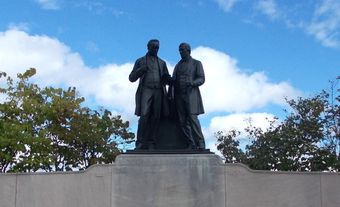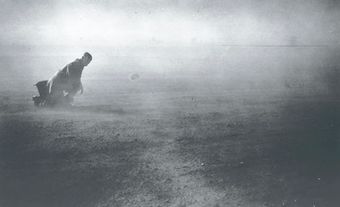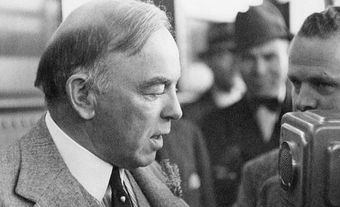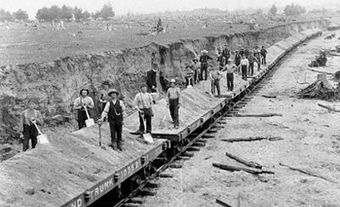The Great Depression took place in Canada and around the world in the 1930s. The term “Depression” is used to describe an economic decline that lasts for a long time. During the worst period of the Depression about 30 percent of Canadians were unemployed. This made life very difficult because Canada had few social programs at the time. This changed because of the Depression. In the 1930s the government created social programs to help those in need. It also became more involved in the economy.
(This article is a plain-language summary of the Great Depression in Canada. If you are interested in reading about this topic in more depth, please see our full-length entry, Great Depression in Canada.)

Causes of the Great Depression
The event that started the Great Depression was the stock market crashes that occurred in the fall of 1929. Within weeks many important companies lost much of their value. The stock market crashed because companies produced too many goods and the prices of the goods went down. There was little demand and too much supply. Soon after the crash many businesses went bankrupt, and tens of thousands of Canadians lost their jobs. This made the economy worse. People did not have money to spend. So, more businesses went bankrupt. When more businesses went bankrupt, more people lost their jobs. It was a vicious cycle.
The problem was especially bad in the western provinces. The western economy depended on exports and international trade, which collapsed. The prairies had also suffered from years of drought. This caused huge crop failures.
Government Responses

The federal government was not very involved in the economy at the start of the Depression. Many economists and politicians believed in an idea called laissez-faire (or leave it alone) economics. They thought that the economy would work best if the government left it alone. According to this idea, only capitalists should guide the economy. In the 1930s many people began to question this idea. The unemployment rate was very high. Poor people were getting poorer. And the economy was not improving.
Canada had two prime ministers during the Depression. William Lyon Mackenzie King was prime minister from 1926 to 1930 and from 1935 to 1948. R.B. Bennett was the prime minister from 1930 to 1935. At first, neither of them wanted the federal government to get involved. They thought that churches and local and provincial governments should provide social services. Without federal help, many local governments went bankrupt. So did the Prairie provinces.
Some politicians were very different from Bennett and King. They wanted the government to get involved. One of the most important of these politicians was J.S. Woodsworth. He was the leader of the Co-operative Commonwealth Federation. This was Canada’s first socialist party.
In time, many other Canadians started to believe that the federal government should intervene. They thought that if it didn’t, the economy wouldn’t recover. Prime Minister Bennett then changed his mind. In 1932, the federal government created work camps for single, unemployed men. But conditions at these camps were bad. Some of the men went on strike or rioted.
Bennett’s government also created the Bank of Canada. It was responsible for the money supply. He also created the Canadian Wheat Board. The board made sure the prices of wheat was good for the farmers. Bennett also planned to introduce a minimum wage and unemployment insurance. But he lost the election to Mackenzie King in 1935.
After becoming prime minister, King set up the National Employment Commission. It recommended that King spend money on creating jobs. He was reluctant to do so. The Second World War, however, made him change his mind. The Canadian state became highly involved in the economy because of the war. In 1940, his government created an employment insurance program. Later, it created a family allowance program. By the end of the war, the federal government was much more involved in the economy.

 Share on Facebook
Share on Facebook Share on X
Share on X Share by Email
Share by Email Share on Google Classroom
Share on Google Classroom






